Bhangarh or more precisely, Bhoot Bhangarh, when we think of this name what first comes to the mind are the haunted stories from the ruins of a small village in India. Search for the most haunted places in India or even in Asia, the name of Bhangarh appears on the top of many such lists. The ghosts of Bhangarh are so powerful and so influential that even in the 21st century of digital age, there is a government board outside the ruins of Bhangarh warning people to stay away from the limits of Bhangarh after the sunset. Only ASI can tell the real meaning of this warning. Sometimes, I do feel that it’s a mere informational board like other historical sites in India, where general visitors are not allowed after the sunset.
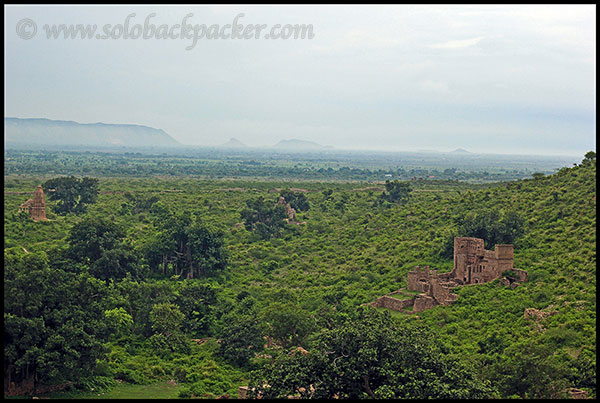
The more I read about Bhangarh, more I got curious to reach there. Then, one day, I finally reached in the mysterious world of Bhoot Bhangarh. While returning from Ajmer to Delhi after visiting many places in the Western Rajasthan on my motorcycle, I took a detour to visit Bhangarh.
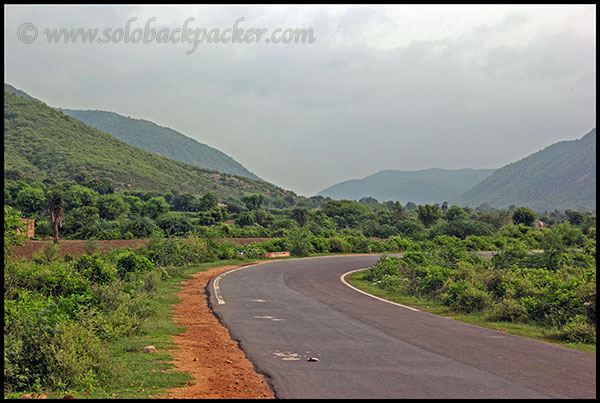
The National Highway from Jaipur to Dausa is well maintained, but riding on the district road after Dausa towards Bhangarh is a real pleasure. The road has many bad patches, but it passes through the beautiful villages where landscapes are dominated by the Aravali hills and thick cover of green vegetation. Before reaching Bhangarh, it passes through a small village, Gola ka Bas, that looks like a big centre of idol making. Lot of marble stones get the shapes of beautiful idols everyday in the village.
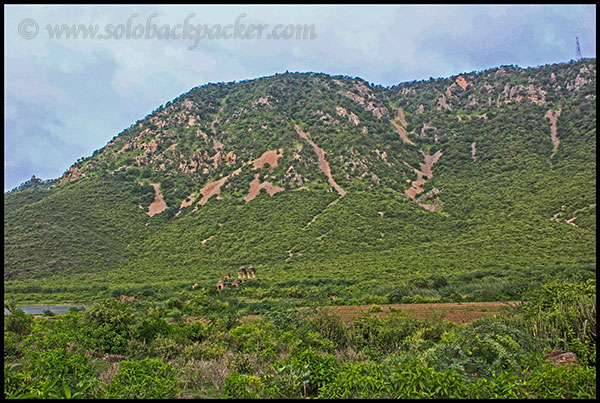
The first look of Bhangarh was also a pleasant surprise. I was expecting to visit the desrted ruins in the middle of nowhere. But the valley of Bhangarh was quite different from my imagination. It doesn’t look like the most haunted place in India, where the ghosts of Bhangarh rule without any limitation. On the other hand, it looks like an amazing tourist place with a green, calm and beautiful surrounding, where hundreds of tourists roam freely to enjoy a spectacular valley, Aravali hills, low clouds and some impressive ruins.
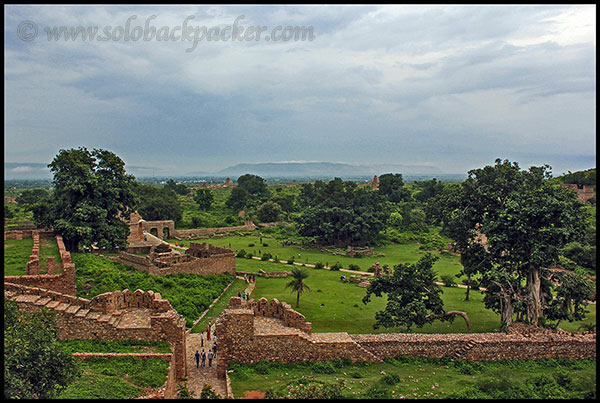
The fort of Bhangarh is about one km from the main road at the foot of the hills. The territory of Bhangarh Fort is locked from all sides either by a boundary wall or by the hills. The main palace is situated on a sloping terrain at about 400-500 meters distance from the first entry gate. In between, the premises of the fort is dominated by the long pathways, beautiful temples, some havelis, small ponds and stunning ruins of the palaces. When I reached at the parking area near the entry gate, a huge crowd of the tourists was already there. The major part of that crowd was formed by the students of nearby professional colleges, who were there to enjoy the beauty of Bhangarh Valley in the rainy season.
No entry ticket is required to visit the ruins of Bhangarh Fort. After few meters of walk from the first entrance, there is the ruins of Jauhari Baazar (market). These ruins look more spectacular than the similar ruins of old baazars in the fort of Chittorgarh and Fatehpur Sikri.
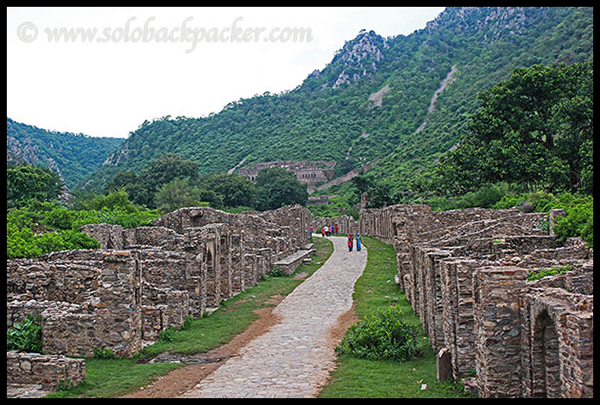
After these ruins, there is the second entry gate. After passing through a corridor covered by the big Banyan trees, there is a huge open area having two temples on the both side of the road. The temple at left side is little away closed to a dirty pool and was dedicated to Lord Shiva. The Gopinath Temple at the right side of the road doesn’t has any idol, but many people still use to worship there. Both temples are really in a good shape unlike the other buildings in the fort premises, that are completely ruined.
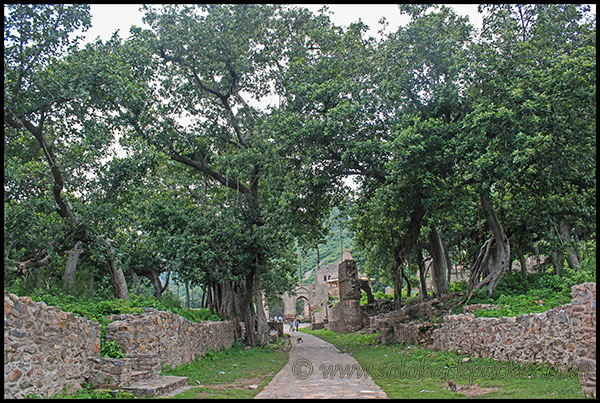
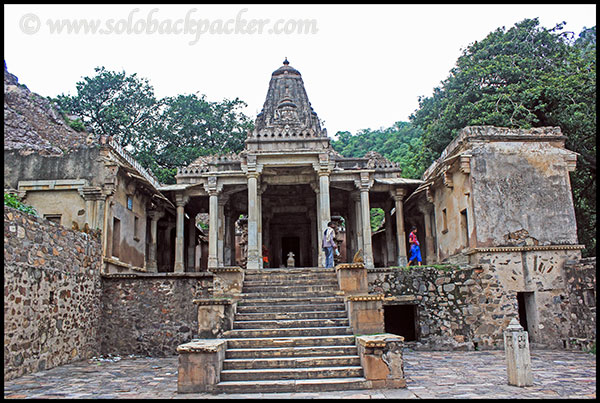
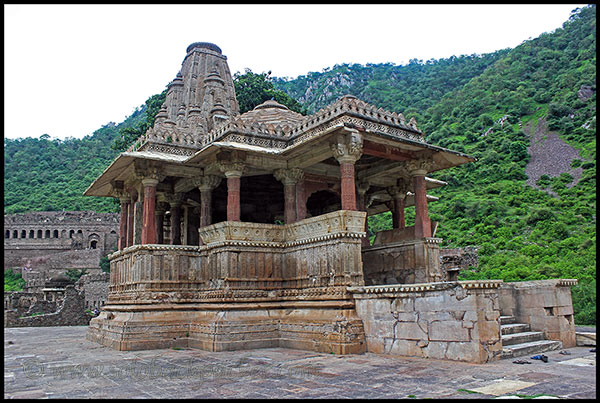
There are many more temples scattered in the premises of the fort. Many of the temples are completely abandoned. The other temples include Mangla Devi Temple, Keshav Rai Temple, Hanuman Temple, Someshvara Temple, Ganesh Temple etc.
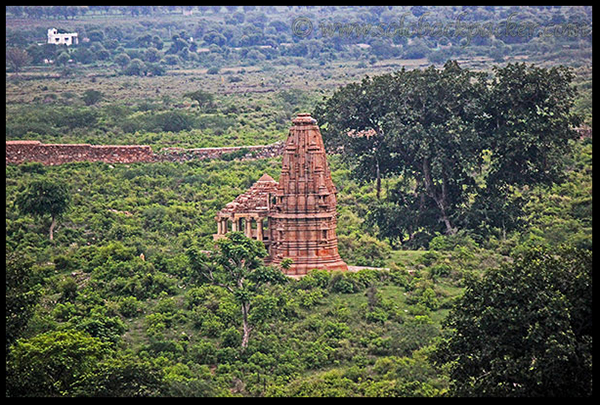
After passing the temple area, there is the main entrance of the Royal Palace. Like other ruins in the area, there is nothing special in the palace, no paranormal activities, no appearance of the ghosts. But yes, when you enter in the palace, you find an absolute darkness in the corridor as well as nearby rooms. That dark world is enough to scare people who reach there to meet some ghosts. The narrow alley and the stairs to the roof are completely covered by the bats. When I was there, the stinky smell of the bats were so bad that one girl became unconscious while passing through that area.
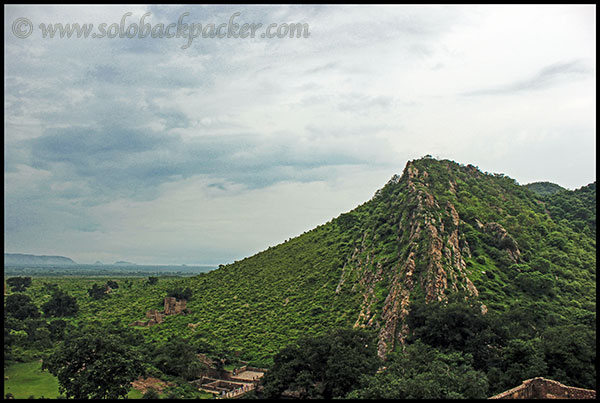
Reaching on the top of the fort provides a big relief from that smell. The fort originally had the seven storeys, but now only four storeys remain. The view from the top of the fort is equally breathtaking with the splendid ruins all around, a serene valley and the beauty of Aravali hills. It looks like a spectacular hill station.
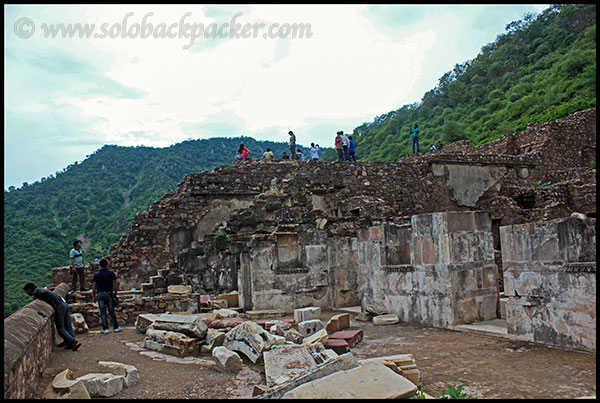
There is a small dome-shaped structure (chhatri) on a hill. It doesn’t look very impressive, but has a strong connection with the haunting story of Bhoot Bhangarh. It was the residence of the tantrik who was responsible for the destruction of Bhangarh. A short trek for 30-40 minutes is required to reach at that point. Very few people normally visit that place. Awesome views of the Bhangarh Valley can be enjoyed on the top of the fort also, so there is no need to climb on the hill.
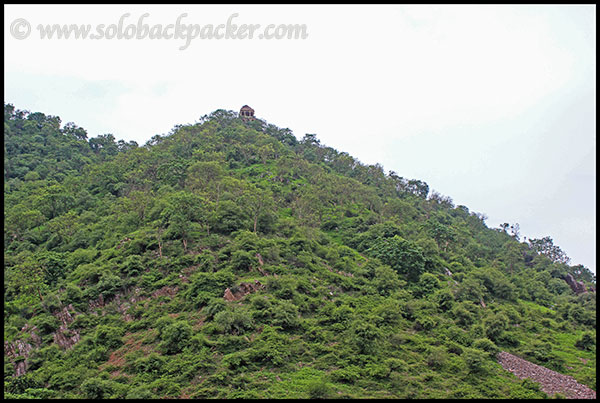
There isn’t any documented history about the making and destroying of the Bhangarh, but these two stories are commonly famous among the masses:
First Story: The first legend is associated with the beautiful lady of Bhangarh , Princess Ratnavati and a tantrik (black wizard) Singhia(or, N.K.Sinha). The tantrik felt in the love with her. One day, the princess went for shopping with her friends. When she was buying a bottle of Ittar (scent) in the market, the tantrik did some magic on the bottle of Ittar, to make her fall in love with him. But the princess was herself a master of Black Magic. She smelled the foully and smashed the bottle of that Ittar on a big boulder. The boulder rolled down towards the tantrik and crushed him to the death . Before he died he cursed that Bhangarh would be destroyed soon and no one would be able to live within its premises. It was due to his curse, the fort of Bhangarh was invaded (either by the Mughals or by the king of Ajabgarh) in the coming year. All the people in the fort including the princess were killed. It is believed that the bad spirit of the tantrik abducted the spirit of the princess and they are the main reasons behind all paranormal activities in the night.
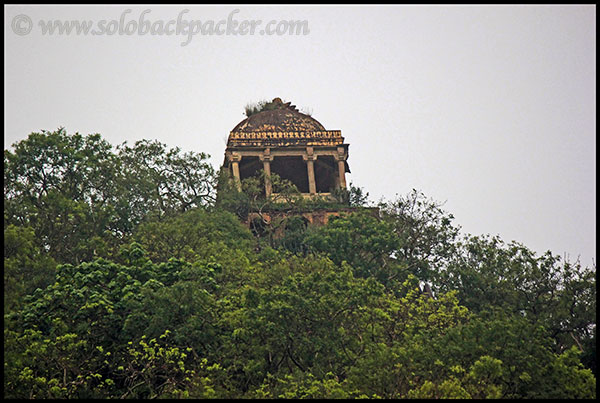
Second Story: There is another legend associated with Baba Balanath (or, Balunath). He was living in the fort premises. He permitted the King Madho Singh to built the fort with the condition that the shadow of the any house in the fort premises must never fall upon the hut of the Baba and in case the shadow of any such house falling on his hut would result in the destruction of the Bhangarh. In the later years, an ambitious ruler of Bhangarh raised the height of Bhangarh Palace vertically resulting in a complete destruction of Bhangarh.
Probable Cause of Destruction: Although there isn’t any exact proof behind the curse of Bhangarh. But, it seems that after the war with Ajabgarh (or with the Mughals), the condition of Bhangarh became very bad. People started migrating towards the nearby states of Jaipur and Alwar and in the later year the entire city became deserted. A great famine in the 18th century could be an another reason of Bhangarh’s fate.
The fort premises is covered by the thick vegetation. The area is the home of many wild animals, snakes and other dangerous species. It could be the another reason why visitors are not allowed after the sunset.
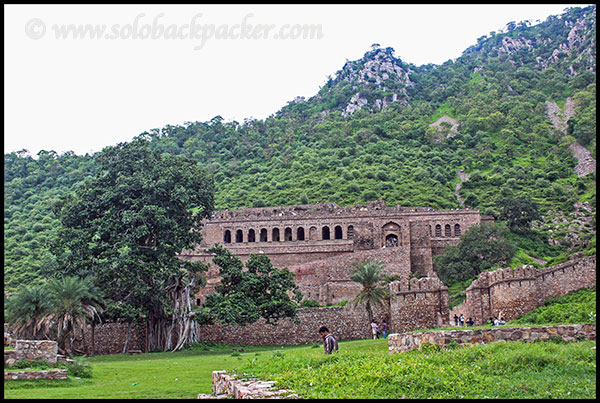
By the time, I came outside after visiting the fort, it was already dark. There was no place to stay in the night. The guard suggested me to either go to the Narayani Mata Temple, 8 kms away or the Thanagazi town, 30 kms away to find a place to sleep. Somebody advised me to check with the priest of a local Sarsa Devi Temple, that is about one and half km from the fort area. I decided to try my luck at the Narayani Mata Temple. But, there was a big chance of sudden rain as well as damaged road in that 8 kms distance to Narayani Mata Temple, and after that even there was no guarantee to get a place. In this dilemma, I moved for two kms and then return back to the local Sarsa Devi Temple. I discussed with the priest and he gladly arranged a room in the temple premises. They also arranged the dinner. In fact, there are many rooms in the temple complex, where people can stay in the night. But most of the people, who stay there, are the devotees of the goddess.
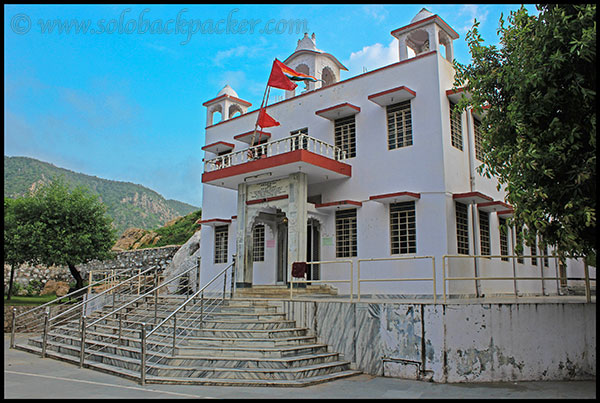
In the morning, while moving towards Sariska, I found that it was a good decision to stay there in the night. The road was in very bad shape after Bhangarh upto Thanagazi town. However, one can find some more options to stay in the vicinity of Bhangarh. These include a luxury property Amanbagh near Ajabgarh village, the beautiful Sariska Palace as well as many hotels in Sariska, Dausa and Alwar. Small guesthouses are also available at Thanagazi and Narayani Mata Temple area, but there is no place to stay in the Bhangarh village except the guest rooms at Sarsa Devi Temple.
After that visit to Bhangarh, I got a new perception about the most haunted fort of India. Beyond the haunted ruins of Bhangarh Fort and scary stories of its ghosts, Bhangarh Valley is an awesome place to visit in the rainy season. The surrounding greenery in that season enhanced the beauty of the valley and it becomes a major tourist spot in the area. Next time, whenever you go to Bhangarh, visit it with a new perspective beyond the stories of the ghosts. You will definitely enjoy the serenity of the Bhangarh Valley. Also, since it is very closed to the Sariska Tiger Reserve, you can always include Bhangarh in your itinerary while going on a trip to Sariska.


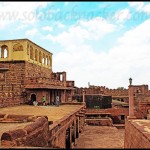
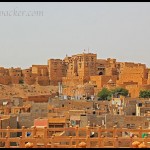


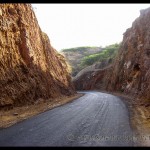
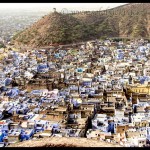
many hidden gems–destinations in india.Why indians visit abroad?
Such a new perspective you brought to the age old stories. Bhangarh is in my bucket list and now I’ll wait until the monsoons to visit. 🙂
Yes..The Bhangarh is really beautiful during the monsoons and you will definitely enjoy it. You can plan a weekend trip to Bhangarh including Sariska Tiger Reserve. 🙂